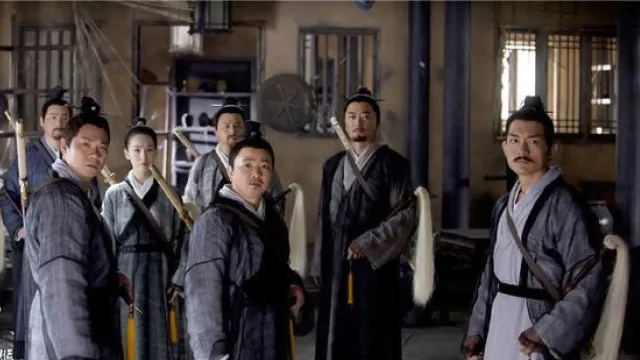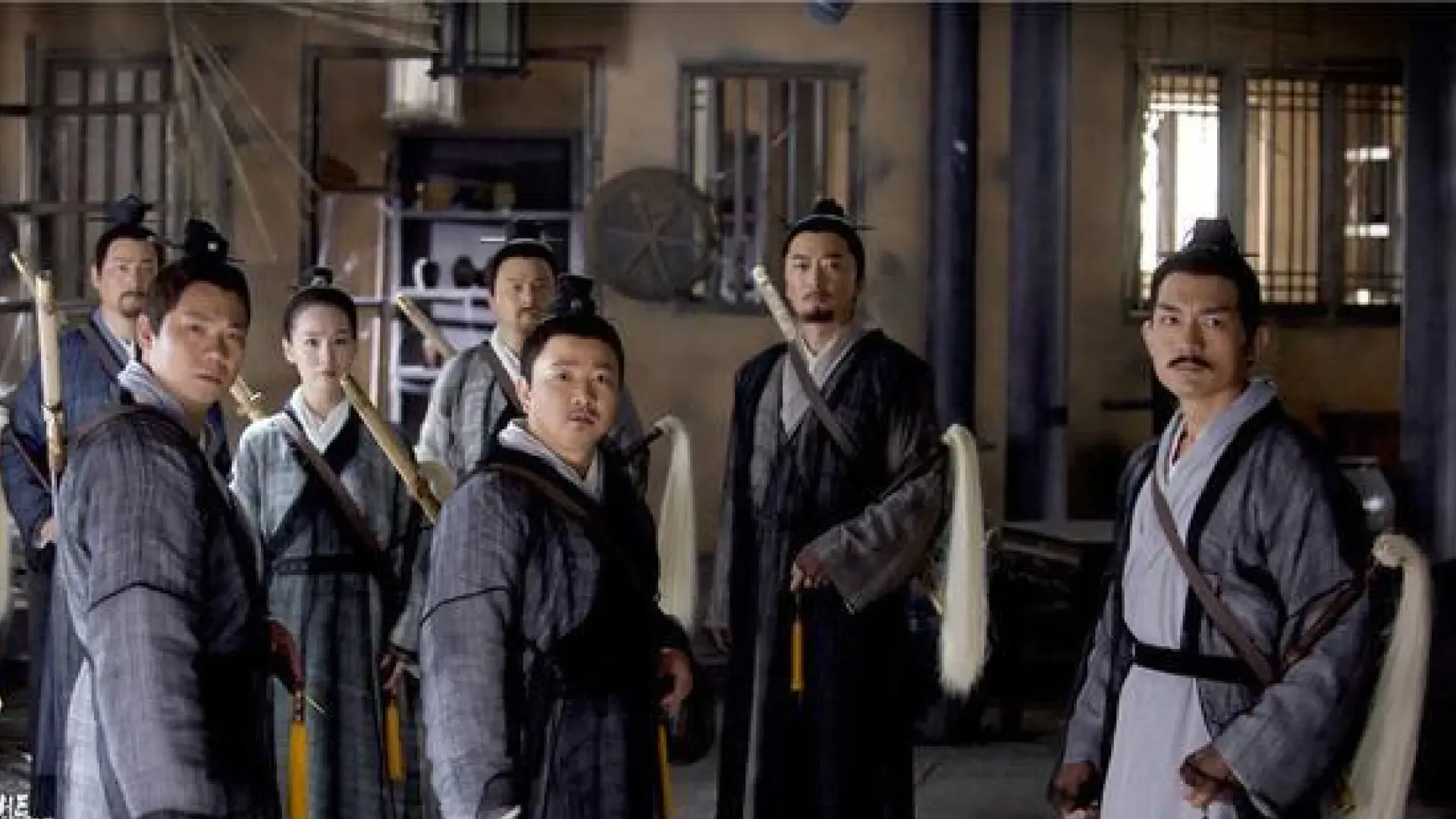Sun Buer (simplified: 孙不二, traditional: 孫不二, pinyin: Sūn Bù, jyutping: syun1 bat1 ji6), known by her Daoist name Qingjing Sanren (清净散人 – Qīngjìng Sǎnrén), was the only female member among the Seven Zis of Quanzhen and a pioneering figure in female Daoist cultivation. Originally named Sun Fuchun (孙富春), she was the wife of Ma Yu before both became disciples of Wang Chongyang, the Central Divine of the Five Greats.1
Her unique position as the sole woman among the Seven Zis made her a trailblazer for female practitioners in the traditionally male-dominated world of martial arts and Daoist cultivation. She founded the Qingjing School (清静派 – Qīngjìng Pài), which focused particularly on meditation and internal cultivation techniques suitable for female practitioners. Her transformation from Ma Yu’s wife to his spiritual sister exemplified the profound personal sacrifices required for authentic Daoist cultivation, while her teaching of disciples like Cheng Yaojia demonstrated her commitment to advancing opportunities for women in the jianghu.
Biography
Early life and marriage
Sun Bu’er was born Sun Fuchun in Ninghai, Shandong Province, into a wealthy and educated family. She demonstrated exceptional intelligence from an early age, becoming well-versed in classical literature, poetry, and music. Her upbringing in a privileged household provided her with educational opportunities that were rare for women of her era.
She married Ma Yu, who was known as “Ma Banzhou” (Ma of Half the Prefecture) due to his extensive landholdings and wealth. Their marriage was harmonious and prosperous, producing three sons: Tingzhen, Tingrui, and Tinggui. As the wife of one of the most prominent figures in Shandong Province, Sun Fuchun enjoyed a comfortable life surrounded by luxury and social status.
However, beneath this comfortable existence, she possessed a spiritual restlessness and intellectual curiosity that would later draw her toward Daoist cultivation. Her education and natural wisdom prepared her for the profound changes that would transform her life when Wang Chongyang arrived in their region.
Encounter with Wang Chongyang and spiritual awakening
In 1167, when Wang Chongyang traveled east from the Zhongnan Mountains to spread Quanzhen teachings, both Sun Fuchun and her husband encountered the charismatic Daoist master. Wang Chongyang’s teachings and supernatural demonstrations convinced them both to abandon their worldly life and pursue spiritual cultivation.
The decision required extraordinary personal sacrifice from Sun Fuchun, as it meant abandoning not only her comfortable lifestyle but also her role as wife and mother. She and Ma Yu divided their wealth among their three sons and formally ended their marriage, though they maintained deep mutual respect and affection as they embarked on their spiritual journey together.
Wang Chongyang gave her the Daoist name “Bu’er” (不二), meaning “Not Two” or “Non-dual,” reflecting the Daoist principle of transcending dualistic thinking. Her later title “Qingjing Sanren” (清净散人), meaning “Pure and Tranquil Hermit,” emphasized her focus on inner purification and peaceful cultivation.
Formation of the Qingjing School
One of Sun Buer’s most significant contributions to the Quanzhen Order was her establishment of the Qingjing School (also known as Qingjing Daoism), a specialised branch that addressed the particular needs and challenges faced by female practitioners in a predominantly male martial arts environment.
The Qingjing School developed cultivation methods that were specifically adapted to women’s physiology and psychology, recognizing that traditional martial arts training often overlooked the unique aspects of female spiritual development. Sun Bu’er’s innovations included modified breathing techniques, internal energy circulation patterns, and meditation practices that enhanced rather than conflicted with feminine qualities.
The school’s emphasis on “qingjing” (清静 – purity and tranquility) reflected Sun Bu’er’s philosophy that inner peace and mental clarity were the foundations for all advanced martial arts and spiritual achievements. This approach proved particularly effective for women who sought to develop their potential without adopting masculine cultivation methods that might be unsuitable for them.
Teaching and mentorship
Sun Bu’er’s role as teacher and mentor extended beyond technical martial arts instruction to include comprehensive guidance on balancing spiritual cultivation with practical life requirements. Her most notable disciple was Cheng Yaojia, a young woman who initially harbored romantic feelings for Guo Jing but learned to redirect her emotional energy toward spiritual development.
Through her work with Cheng Yaojia and other female disciples, Sun Bu’er demonstrated how personal desires and attachments could be transformed into spiritual motivation rather than simply suppressed. Her teaching methods emphasized understanding and working with emotional energy rather than rejecting it, creating a more sustainable approach to cultivation for many practitioners.
Her influence extended to establishing networks of female practitioners throughout northern China, providing support systems and educational opportunities that had previously been unavailable to women interested in martial arts and Daoist cultivation.
the Seven Zis
Sun Bu’er’s position as the only woman among the Seven Zis required her to navigate complex interpersonal dynamics while maintaining her spiritual development and authority within the group. Her relationships with her six male martial siblings were characterized by mutual respect, though each relationship required different approaches depending on their personalities and specializations.
Her former husband Ma Yu became her closest ally and collaborator within the group, with their successful transformation from married couple to spiritual siblings serving as an example of their spiritual maturity. Their continued cooperation in Quanzhen Order activities demonstrated that personal relationships could evolve and deepen through shared spiritual commitment.
Her interactions with the more aggressive Qiu Chuji were marked by the respect due to her as the only female member of their group, while her relationships with scholarly members like Tan Chuduan and Liu Chuxuan involved intellectual collaboration on doctrinal and administrative matters.
Personality and traits
Pioneering spirit
Sun Bu’er possessed exceptional courage and determination in challenging social conventions that limited women’s participation in martial arts and spiritual cultivation. Her willingness to abandon a comfortable life and social status to pursue authentic spiritual development demonstrated remarkable strength of character.
Her pioneering spirit extended beyond personal cultivation to include systematic efforts to create opportunities for other women. The establishment of the Qingjing School and her methods for adapting Quanzhen teachings to female practitioners showed her commitment to systemic change rather than merely personal achievement.
Wisdom and adaptability
Sun Bu’er demonstrated sophisticated understanding of how to balance tradition with innovation, preserving the essential principles of Quanzhen cultivation while adapting methods to serve female practitioners effectively. Her approach showed that authentic development could occur within established frameworks when guided by wisdom and genuine understanding.
Her ability to maintain harmonious relationships within the Seven Zis while pursuing her specialized focus on female cultivation reflected diplomatic skills and emotional intelligence that enhanced the group’s overall effectiveness.
Spiritual depth
Sun Bu’er’s emphasis on inner tranquility and mental clarity reflected a profound understanding of the psychological foundations necessary for advanced spiritual development. Her teaching methods demonstrated that outer accomplishments in martial arts were most sustainable when supported by genuine inner transformation.
Her personal example of transforming from a wealthy housewife to a respected spiritual teacher inspired many women to believe that significant spiritual achievement was possible regardless of their starting circumstances.
Martial arts abilities
Quanzhen foundational arts
As one of Wang Chongyang’s direct disciples, Sun Bu’er mastered the profound Innate Skill that formed the foundation of all Quanzhen martial arts. Her approach to qi cultivation emphasized harmony and flow rather than forceful accumulation, creating techniques that were both effective and sustainable for long-term practice.
The Innate Skill provided Sun Bu’er with remarkable vitality and mental clarity that supported both her martial effectiveness and her demanding responsibilities as a teacher and faction founder. Her mastery demonstrated that the highest levels of internal cultivation were achievable through gentle, consistent practice rather than only through aggressive training methods.
Female-adapted techniques
Sun Bu’er’s innovations in martial arts included developing techniques that worked with rather than against feminine physiology and psychology. These adaptations included modified stances that accommodated different body proportions, breathing patterns that harmonized with natural biological rhythms, and energy circulation methods that enhanced rather than suppressed feminine qualities.
Her techniques proved that effective martial arts could be developed through systematic adaptation rather than rigid adherence to masculine training models. These innovations influenced martial arts development well beyond the Quanzhen Order, as other schools began to consider how their methods could be made more accessible to female practitioners.
Qingjing School methods
The martial arts methods developed within the Qingjing School emphasized fluidity, precision, and internal control rather than external power. These techniques proved particularly effective for practitioners who sought martial skills that complemented rather than conflicted with meditative and scholarly pursuits.
The Qingjing School techniques became known for their elegance and effectiveness, demonstrating that martial arts could be both beautiful and practical when developed through careful attention to principles rather than simple imitation of existing forms.
Big Dipper Formation participation
As one of the Seven Zis, Sun Bu’er participated in the legendary Big Dipper Formation, occupying a position that utilized her unique abilities in maintaining group harmony and energy coordination. Within the formation, her role involved providing stability and balance that allowed her more aggressive martial brothers to take offensive positions.
Her performance in the formation demonstrated how gender differences could enhance rather than limit martial effectiveness when properly understood and utilized. The formation’s effectiveness depended partly on Sun Bu’er’s ability to maintain emotional and energetic equilibrium even under extreme pressure.
Teaching effectiveness
Sun Bu’er’s approach to martial arts instruction emphasized understanding individual student needs and adapting methods accordingly. Her success with disciples like Cheng Yaojia showed that effective teaching required attention to psychological and emotional factors as well as technical skill development.
Her teaching methods influenced educational approaches throughout the Quanzhen Order, demonstrating that comprehensive instruction could enhance rather than replace traditional martial arts training.
Relationships
Wang Chongyang
Sun Bu’er’s relationship with her shifu2 Wang Chongyang was characterized by mutual respect and her unique position as his only female disciple among the Seven Zis. Wang recognized her exceptional potential and encouraged her development of specialized methods for female cultivation that became influential throughout the Order.
Under Wang’s guidance, Sun Bu’er developed both her martial abilities and her understanding of how to create inclusive spiritual communities that served practitioners of all backgrounds. This relationship provided the foundation for her later success in founding the Qingjing School and expanding opportunities for female practitioners.
Ma Yu
Sun Bu’er’s transformation from Ma Yu’s wife to his spiritual sister represented one of the most remarkable relationship evolutions in Chinese martial arts literature. Their ability to maintain deep mutual respect and effective collaboration after ending their marriage demonstrated extraordinary spiritual maturity from both parties.
Their continued partnership in Quanzhen Order activities showed that authentic spiritual relationships could transcend conventional social categories when both parties were committed to genuine development. Their example influenced many other practitioners who faced similar challenges in balancing personal relationships with spiritual cultivation.
Cheng Yaojia
Sun Bu’er’s relationship with her disciple Cheng Yaojia illustrated her teaching methods and her approach to helping younger women navigate the challenges of martial arts training and spiritual development. Her guidance helped Cheng Yaojia transform romantic disappointment into spiritual motivation and eventually find happiness in marriage with Lu Guanying.
This mentorship demonstrated Sun Bu’er’s understanding that effective teaching required addressing students’ emotional and psychological needs as well as their martial arts development. Her success with Cheng Yaojia validated her approaches to female cultivation and encouraged other women to pursue martial arts training.
The Seven Zis collective
Sun Bu’er’s interactions with her six male martial siblings required sophisticated diplomatic skills and emotional intelligence to maintain group harmony while pursuing her specialized focus on female practitioners. Her success in these relationships contributed significantly to the overall effectiveness of the Seven Zis as a leadership group.
Her presence within the group provided balance and perspective that enhanced their collective decision-making and problem-solving capabilities. Her unique viewpoint often identified solutions that her male colleagues might overlook, demonstrating the value of gender diversity in leadership positions.
Behind the scenes
Legacy and influence
Female martial arts development
Sun Bu’er’s innovations in female cultivation methods provided a foundation for women’s participation in Chinese martial arts that influenced development for centuries. Her demonstration that women could achieve the highest levels of martial and spiritual accomplishment challenged social conventions and opened opportunities for future generations.
The Qingjing School’s continued success validated her approaches to female cultivation, providing practical models that other martial arts organisations could adapt to serve their own female practitioners more effectively.
Educational methodology
Sun Bu’er’s teaching methods demonstrated how martial arts instruction could be adapted to serve diverse student populations without compromising effectiveness or authenticity. Her approaches influenced educational development throughout the jianghu, encouraging instructors to consider individual student needs rather than applying uniform methods.
Her emphasis on understanding psychological and emotional factors in martial arts training became an important precedent for comprehensive martial arts education that addressed students’ complete development rather than only their physical capabilities.
Social transformation
Sun Bu’er’s example showed how individual spiritual achievement could contribute to broader social change, as her success encouraged other women to pursue martial arts training and spiritual cultivation. Her influence extended beyond the jianghu to impact social attitudes about women’s capabilities and appropriate roles.
Her transformation from wealthy housewife to respected spiritual teacher demonstrated that significant personal change was possible at any stage of life, inspiring many people to pursue authentic development regardless of their current circumstances.
Sun Bu’er represents Jin Yong’s exploration of gender roles and women’s potential within traditional Chinese martial arts contexts. Her character demonstrates how authentic spiritual development can transcend social conventions while remaining grounded in traditional wisdom and practices.
The historical Sun Bu’er (1119-1182) was indeed the wife of Ma Yu and the only female member of the Seven Masters of Quanzhen. Jin Yong’s portrayal draws on this historical foundation while emphasizing her role in advancing opportunities for female practitioners and demonstrating alternative approaches to spiritual cultivation.
Her relationship with Ma Yu provides Jin Yong with opportunities to explore how personal relationships can evolve through shared spiritual commitment, showing that authentic development often requires transcending conventional categories and expectations.
The founding of the Qingjing School serves narrative purposes by demonstrating how traditional wisdom can be adapted to serve new populations and needs, providing a model for how martial arts organisations can evolve while maintaining their essential character.
Portrayals
Sun Bu’er has appeared in various television and film adaptations of Jin Yong’s novels, though her roles are typically smaller than those of more prominent characters:
The Legend of the Condor Heroes
- 1983 series – Lee Heung-kam
- 1994 series – Gigi Wong
- 2003 series – Wang Lin
- 2008 series – Liang Guanhua
- 2017 series – Ma Xiaohui
The Return of the Condor Heroes
Most portrayals emphasize her wisdom and pioneering role as the only female member of the Seven Zis, often depicting her as a maternal figure who provides guidance and balance within the group while maintaining her own spiritual authority and martial prowess.
See also
- The Legend of the Condor Heroes characters
- The Return of the Condor Heroes characters
- Wang Chongyang – Her master
- Ma Yu – Her former husband and martial brother
- Seven Zis of Quanzhen – Her faction
- Quanzhen Order – Her sect
- Cheng Yaojia – Her disciple
- Qingjing School – Her branch
External links
- Sun Bu’er on Wikipedia
- Sun Bu’er on Chinese Wikipedia (Chinese, historical figure)
- Sun Bu’er (Chinese) on Baidu Baike
Footnotes
-
江湖 – jiānghú. The world of martial arts. A sub-society involving all who are related to the martial arts scene. What is jianghu? ↩
-
师父 – shīfū. Teacher or master responsible for technical instruction and moral guidance. Shī means teacher. Fū means father. See Wuxia Wiki. ↩


